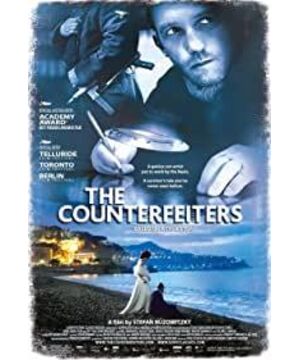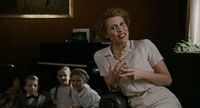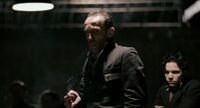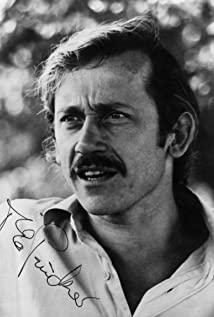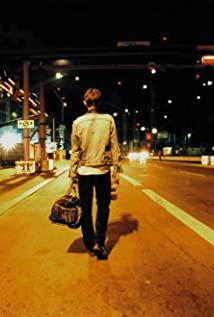Mission Cause
The operation was conceived by a fanatical Nazi, Alfred Naujocks. He was the initiator of the attack on German radio station in the early morning of September 1, 1939, posing as the Polish army. After the German occupation of the Low Countries, Heydrich transferred him to the SA Archives Section. Nayoks is a man who will do anything for his own gain and is clearly not willing to stay there and make fake passports. The idea of throwing the world into a counterfeit currency crisis appealed to him, and he wanted to bring down the British economy by flooding the UK with fake pound sterling. Nayoks reported his plans to Heydrich. The latter appreciates the idea, since espionage abroad is expensive and the Ministry of Economy has limited foreign exchange for German intelligence. And the US dollar is also included in the forgery target. Since the United States was not at war with Germany at the time, Hitler rejected the proposal to counterfeit dollars. German Economy Minister Funk does not support the plan, he is worried that the collapse of the pound will cause strong volatility in the international currency market and affect the Deutsche mark. Heydrich entrusted the task to the Fourth Bureau of the Reich's Central Security Directorate and established a new department called SHARP4 to oversee the matter. In the summer of 1942, the SS opened a factory for printing counterfeit banknotes at the Sachsenhausen concentration camp. The plan is also known as "Aktion 1" in Berlin. The Nazis gathered the best German engravers, paper technologists and mathematicians for this purpose. The latter is responsible for deriving the numbering scheme for sterling banknotes.
printing money
The money-printing workshop in Sachsenhausen was isolated from the rest of the camp, and 60 prisoners worked day and night, led by professional printer Max Boder. The prisoners were all Jews from several other concentration camps (even Auschwitz) and often had experience with forging banknotes or documents before being arrested. The SS provided them with whatever materials they needed, but there was no suitable paper. The SS set up two specialized paper mills in the Rhineland and the Sudetenland, but they made money-printing paper that was not the same color as real pound sterling under UV light. Proper paper was not produced until 1943 when the special linen for Bank of England banknotes was bought from Turkey. The Sachsenhausen banknote printing plant consumes 12,000 large sheets of printing paper every month, each of which can print 8 banknotes. But the quality of these counterfeit notes was mediocre at best, and it wasn't until the Nazis found Salomon Smolianoff from an Amsterdam prison that a truly qualified product was produced. A skilled Russian counterfeiter, he began forging £50 notes as early as 1927. After Smolyanov corrected earlier mistakes, full production began at the Sachsenhausen plant. The whole printing process takes about 15-20 hours, and each finished product is subject to strict inspection. Only the best products are selected and then go through a remanufacturing process to make them look like old banknotes. The denominations of these counterfeit banknotes include £5, £10, £20 and £50, with £5 accounting for 40%. By mid-1943, Kruger's group had grown to 140, producing 40,000 banknotes a month. The treatment of these prisoners was much better than that of ordinary prisoners in the concentration camps. Not only did they have enough food, they even got a ration of cigarettes.
counterfeit money
Counterfeit coins produced in Sachsenhausen are classified into 4 grades: perfect, near-perfect, flawed and substandard. It was initially planned to airdrop the non-conforming product to the UK, but it was eventually destroyed. Perfect counterfeit banknotes were stored for German spies in enemy and neutral countries. Near-perfect and flawed counterfeit money was shipped in bulk to the occupied areas, gold and food items were bought on the black market, and even light weapons air-dropped by the British and the United States were bought from the local guerrillas. Some of the counterfeit money was distributed to the German embassy in neutral countries and exchanged for local currency. As counterfeiting progresses, so does the quality of counterfeit money. German agents once carried a batch of £5 and £10 notes to Switzerland and exchanged them for Swiss francs, and boldly demanded to verify the authenticity of these pounds (he explained that the pounds were bought on the black market). After being reminded, the bank picked out about 10% of the "counterfeit currency" and accepted the rest of the fake British pound in full. Beautifully printed, high-quality fake sterling has even fooled senior bank staff. Just by chance, the Bank of England found a batch of counterfeit money and thanked the agent for his "honesty". The British also discovered the existence of counterfeit pounds by chance: a Bank of England clerk stumbled upon two banknotes with the same serial numbers in her hand. It can be seen that the counterfeit currency has reached the level of being fake. It can only be found by checking the serial number.
After the war
to the end of the war, a total of 8,965,080 banknotes with a face value of 134,610,810 pounds were forged at the Sachsenhausen factory, most of which were £5 notes. pound notes and abolish the circulation of old banknotes. After the Soviet army approached Sachsenhausen, all equipment and personnel were transferred to Lake Ebensee in Austria. This is a sub-camp area of the Mauthausen concentration camp. Printing continued there until May 3rd. The SS troops guarding the printing workshop loaded dozens of large boxes of counterfeit banknotes into trucks and fled the prisoners. The crowd of refugees blocked the way of the convoy, and the panicked SS sank the counterfeit money from the van to the bottom of the Toplitzsee lake.
postscript
In 1963, a German diver embarked on a treasure hunt on Lake Toeplitz, but died mysteriously shortly after. The Austrian government subsequently banned diving at Lake Toeplitz, citing the large number of rockets, bombs and artillery shells in the lake, which had also been poured into the last days of the war. The boxes were found in 2000. The rest are still missing.
View more about The Counterfeiters reviews


